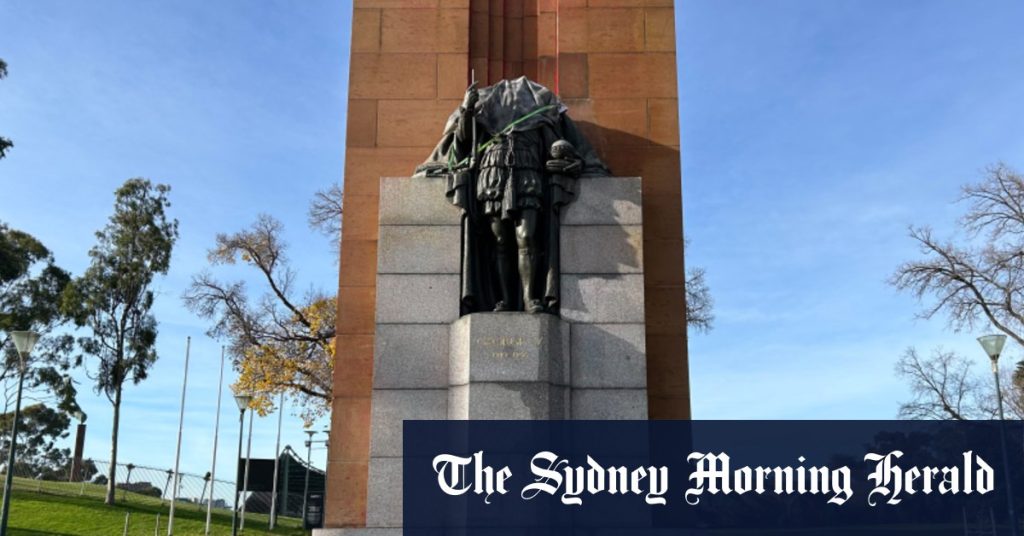The city of Melbourne in Victoria, Australia, has recently experienced another attack on a colonial monument, as vandals beheaded a statue of King George V and covered it in red paint. The incident occurred near the Sidney Myer Music Bowl in Kings Domain, and police were called to the scene early on a Monday morning. This act of vandalism is part of a larger trend of attacks on colonial statues in Australia, with other monuments, such as those of Captain James Cook and Queen Victoria, also being targeted this year.
The attack on the King George V statue took place on a public holiday in Victoria, which was held to observe King Charles III’s birthday. The police spokesman reported that the head of the statue had been removed and red paint was thrown at the monument. This incident follows a series of attacks on colonial statues, including the toppling of a statue of Captain James Cook in Fitzroy Gardens and the sawing off of another Captain Cook statue in St Kilda. At an Invasion Day rally in Melbourne on Australia Day, protesters celebrated the damaging of the Captain Cook statue, as well as the defacement of a statue of Queen Victoria at Queen Victoria Gardens.
In addition to the attacks on statues in Melbourne, a second monument to Captain Cook in Edinburgh Gardens was found broken and covered in graffiti over the Australia Day long weekend. These acts of vandalism highlight the ongoing controversy surrounding colonial monuments in Australia, with many seeing them as symbols of colonization and oppression. The vandalism of these statues has sparked debate and discussion around the country, with some calling for the removal or relocation of colonial monuments, while others defend them as part of the country’s history.
Those responsible for the vandalism of the King George V statue and other colonial monuments have yet to be identified, but authorities are urging anyone with information to come forward. Crime Stoppers can be contacted at 1800 333 000, or information can be submitted online at www.crimestoppersvic.com.au. The incidents of vandalism have brought attention to the deeper issues surrounding colonialism and historical monuments in Australia, prompting further conversations about the country’s past and how it is remembered.
The vandalism of colonial statues in Melbourne and other parts of Australia has reignited the debate over the country’s colonial past and the role of historical monuments in public spaces. While some see these statues as symbols of pride and heritage, others view them as reminders of a painful and oppressive history. The attacks on statues of King George V, Captain James Cook, and Queen Victoria have sparked discussions about Australia’s colonial legacy and the need to reexamine the way history is commemorated in public spaces. As the investigation into the vandalism continues, the community grapples with questions of identity, memory, and power in relation to colonial monuments in Australia.
The incidents of vandalism in Melbourne and across Australia serve as a reflection of the ongoing tensions and controversies surrounding colonial statues and monuments in the country. The defacement of these statues has prompted debates about who and what is honored in public spaces, as well as the ways in which history is remembered and memorialized. The attacks on statues of King George V, Captain James Cook, and Queen Victoria reveal the deep-seated divisions and conflicting perspectives on colonialism and its legacy in Australia. As authorities work to identify and apprehend those responsible, the country continues to grapple with the complexities of its colonial past and the enduring impact of historical monuments on its present-day society.


